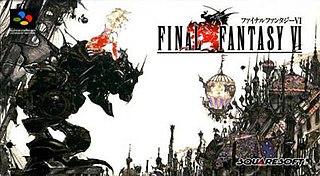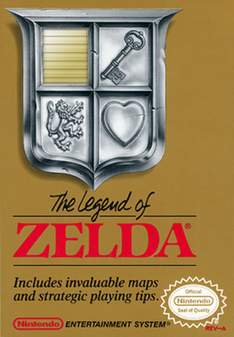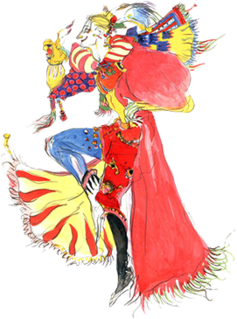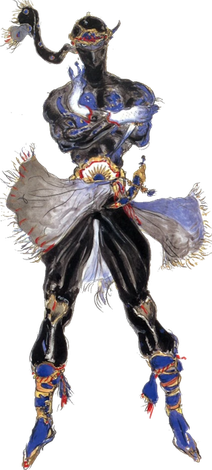Square Co., Ltd. was a Japanese video game development studio and publisher. It was founded in 1986 by Masafumi Miyamoto, who spun off part of his father's electronics company Den-Yu-Sha. Among its early employees were Hironobu Sakaguchi, Hiromichi Tanaka, Akitoshi Kawazu, Koichi Ishii, Kazuko Shibuya, Nasir Gebelli and Nobuo Uematsu. After several other projects, all of these employees would work on Final Fantasy, a 1987 game for the Nintendo Entertainment System which would bring commercial and critical success and launch a franchise of the same name. Later notable staff included Yoshinori Kitase, Takashi Tokita, Tetsuya Nomura, Yoko Shimomura and Yasumi Matsuno.

Final Fantasy IV, known as Final Fantasy II for its initial North American release, is a role-playing video game developed and published by Square for the Super Nintendo Entertainment System. Released in 1991, it is the fourth main installment of the Final Fantasy series. The game's story follows Cecil, a dark knight, as he tries to prevent the sorcerer Golbez from seizing powerful crystals and destroying the world. He is joined on this quest by a frequently changing group of allies. Final Fantasy IV introduced innovations that became staples of the Final Fantasy series and role-playing games in general. Its "Active Time Battle" system was used in five subsequent Final Fantasy games, and unlike prior games in the series, IV gave each character their own unchangeable character class.

Final Fantasy VI, also known as Final Fantasy III from its initial North American release, is a 1994 role-playing video game developed and published by Square for the Super Nintendo Entertainment System. It is the sixth main entry in the Final Fantasy series, and the first to be directed by someone other than series creator Hironobu Sakaguchi; the role was instead filled by Yoshinori Kitase and Hiroyuki Ito. Long-time collaborator Yoshitaka Amano returned as character designer and concept artist, while composer Nobuo Uematsu returned to compose the game's score, which has been released on several soundtrack albums.

Final Fantasy Chronicles is a compilation of Square's role-playing video games Final Fantasy IV and Chrono Trigger, released for the North American Sony PlayStation on June 29, 2001. TOSE ported both titles from the Super Nintendo Entertainment System; each had been previously released as individual Japanese PlayStation ports in 1997 and 1999. Several bonus features were added to each game, such as art galleries, bestiaries, and cutscenes—including computer-generated full motion video used at the beginning of Final Fantasy IV and anime scenes used throughout Chrono Trigger.

Final Fantasy V is a fantasy role-playing video game developed and published by Square in 1992. It is the fifth main installment of the Final Fantasy series. The game first appeared only in Japan on Nintendo's Super Famicom. It has been ported with minor differences to Sony's PlayStation and Nintendo's Game Boy Advance. An original video animation produced in 1994 called Final Fantasy: Legend of the Crystals serves as a sequel to the events depicted in the game. It was released for the PlayStation Network on April 6, 2011, in Japan. An enhanced port of the game, with new high-resolution graphics and a touch-based interface, was released for iPhone and iPad on March 28, 2013, and for Android on September 25, 2013.

Final Fantasy III is a role-playing video game developed and published by Square for the Family Computer. The third installment in the Final Fantasy series, it is the first numbered Final Fantasy game to feature the job-change system. The story revolves around four orphaned youths drawn to a crystal of light. The crystal grants them some of its power, and instructs them to go forth and restore balance to the world. Not knowing what to make of the crystal's pronouncements, but nonetheless recognizing the importance of its words, the four inform their adoptive families of their mission and set out to explore and bring back balance to the world.

The Legend of Zelda, originally released in Japan as The Hyrule Fantasy: Zelda no Densetsu, is a 1986 action-adventure game developed and published by Nintendo. The first game of The Legend of Zelda series, it is set in the fantasy land of Hyrule and centers on an elf-like boy named Link, who aims to collect the eight fragments of the Triforce of Wisdom in order to rescue Princess Zelda from the antagonist Ganon. During the course of the game, the player controls Link from a top-down perspective and navigates throughout the overworld and dungeons, collecting weapons, defeating enemies and uncovering secrets along the way.

In video gaming, a fan translation is an unofficial translation of a video game made by fans.

Secret of Mana, originally released in Japan as Seiken Densetsu 2, is a 1993 action role-playing game developed and published by Square for the Super Nintendo Entertainment System. It is the sequel to the 1991 game Seiken Densetsu, released in North America as Final Fantasy Adventure and in Europe as Mystic Quest, and it was the first Seiken Densetsu title to be marketed as part of the Mana series rather than the Final Fantasy series. Set in a high fantasy universe, the game follows three heroes as they attempt to prevent an empire from conquering the world with the power of an ancient flying fortress.

Kefka Palazzo is a fictional character in the Final Fantasy series of video games. Originally designed by Yoshitaka Amano, he appears in the sixth installment of the series, Final Fantasy VI. First introduced as the court jester and army general under Emperor Gestahl, throughout the game he reveals himself to be a nihilistic psychopath after setting in motion events leading to the Apocalypse and pronouncing himself the God of Magic. From that point he acts as the game's primary antagonist.

Working Designs was an American video game publisher that specialized in the localization of Japanese role-playing video games, strategy video games and top-down shooters for various platforms. Though the company had published many cult hits, it was known best to fans as the long-time exclusive North American publisher of the Lunar series. The company was one of the few game publishers that attempted to bridge the cultural gap between the Japanese and American video game industries during the 1990s with an eclectic selection of releases from various genres, and was also one of the earliest American publishers to make use of the CD-ROM format for full, spoken English dialogue in their titles at a time when voice acting was not a common feature in most mainstream games.

Final Fantasy Legend III, known in Japan as SaGa 3: Jikuu no Hasha, is a role-playing video game developed and published by Square for the Game Boy. The third entry in the SaGa series, it was released in Japan in 1991 and in North America in 1993. A later edition released in North America in 1998 through Sunsoft. A remake for the Nintendo DS was released in 2011 by Square Enix, remaining exclusive to Japan. The Game Boy version was later ported to the Nintendo Switch and released worldwide by Square Enix in 2020, with later ports to Android, iOS and Microsoft Windows in 2021.
Square's role-playing video game Final Fantasy VI features fourteen permanent player characters, the largest number of any game in the main Final Fantasy series, as well as a number of characters who are only briefly controlled by the player.
Video game localization is the process of preparing a video game for a market outside of where it was originally published. The game's name, art assets, packaging, manuals, and cultural and legal differences are typically altered.

Shadow is a fictional character in the 1994 role-playing video game Final Fantasy VI developed and published by Square, alternatively known as Final Fantasy III from its initial North American release. Shadow is a mysterious assassin and cynical mercenary who joins the player's party along his faithful canine companion, Interceptor at various points in the game's narrative. Choices made by the player throughout the narrative of Final Fantasy VI determine whether Shadow survives a cataclysmic event which occurs midway through the game's story, and whether his original identity as a train robber known as Clyde as well as details of his history with other major characters is revealed to the player.
The Japanese video game developer and publisher Square Enix has been translating its games for North America since the late 1980s, and the PAL region and Asia since the late 1990s. It has not always released all of its games in all major regions, and continues to selectively release games even today depending on multiple factors such as the viability of platforms or the condition of the game itself. The process of localization has changed during that time from having a one-person team with a short time and tight memory capacities to having a team of translators preparing simultaneous launches in multiple languages.
Marcus Lindblom is an American video game developer known for his English localization of the 1994 video game EarthBound. Lindblom spent his youth in the United States, and dropped out of college to move to Japan with his wife. After four years, he returned to college in the United States and began to work at Nintendo of America's call center. He eventually worked on Japanese-to-English game localization projects such as Wario's Woods and EarthBound. Lindblom worked with a translator and a writer to accurately translate the game for a Western audience. He sought to stay true to Shigesato Itoi's script, but was given latitude to make the script as weird as he wanted, and so added in American cultural allusions. Lindblom considers the localization his highest achievement.

The Mother 3 fan translation is a complete English-language localization of the 2006 Japanese video game Mother 3 by members of the EarthBound fan community led by Clyde "Tomato" Mandelin. The original game was released in Japan after a decade of development hell. When fan interest in an English localization went unanswered, members of the EarthBound fansite Starmen.net announced their own fan translation in November 2006.
Richard Mark Honeywood is a video game localization director and professional English/Japanese translator. He grew up in Australia and moved to Japan after graduating with degrees in computer science and Japanese from the University of Sydney. Honeywood initially worked for several Japanese video game developers as a programmer, but transitioned to localization after joining Square in 1997. He is credited with founding the localization department at the company which has been praised for its high-quality translations. During his tenure at Square, Honeywood expanded the team's role from text translation to becoming a partner of the development team, creating localized text and graphics and ensuring that the video game code supported multiple languages easily. In 2007, Honeywood left Square Enix for Blizzard Entertainment, where he served as the global localization manager for World of Warcraft until November 2010. He then moved to be the translation director for Level-5.













